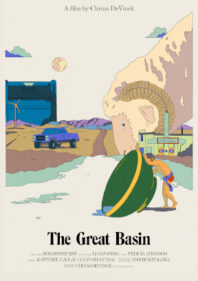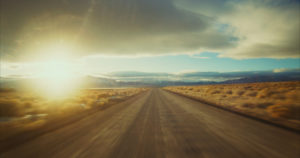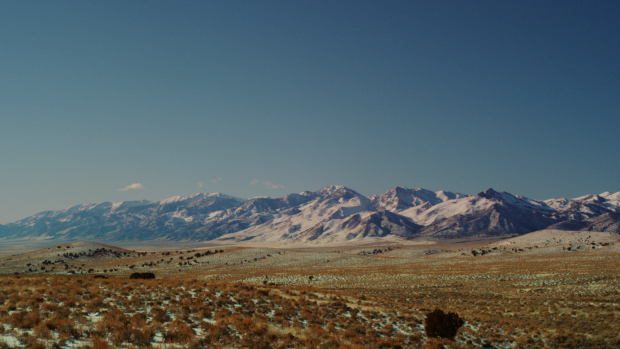
“I live on the other side of nowhere,” states one of the subjects of director Chivas DeVinck’s documentary feature The Great Basin. This is indeed rural America. Ely, Nevada is a small town. Its population is approximately 4,000. It’s in an area situated on what is known as the ‘Loneliest Road in America,’ a fact people display on t-shirts and hoodies. There’s not a lot of amenities in this old mining town. There’s a train station, a bar, a small movie theatre, a brothel, and of course slot machines. This is Nevada after all. Their resources are finite, and here, water is the most valuable.
Though it appears an arid, desert landscape, the area of the Great Basin spans almost the entire state of Nevada where water is just underneath the surface. The ranches covet this subterranean water, ranchers who raise their sheep and cattle here, as well as the other residents. It’s also wanted by Las Vegas. For years, that city has been trying to build a pipeline from the area to better supply the city. It’s a project that unites all different factions of people to fight against it, for fear of what it will mean to their local water supply and vitality.
However, The Great Basin is about so much more than water, though that itself is a compelling story. DeVinck instead is looking at the big picture. A collage of footage and images that truly paints a picture of what life looks like in this part of the United States. It’s an examination of the socio-economical and political differences here. It demonstrates that diversity of thought with the city council’s discussion of the animal licensing by-law. One council member finds that that law undermines citizens’ freedoms and is an overreach of government. We see it in one man’s belief in the second amendment. And we see it in a radio announcer’s reaction to the start of the COVID pandemic. These snippets of every day existence paint a portrait of the inhabitants here.
The film largely concentrates on its people, from the rancher, to the Peruvian workers who help tend to his flock. It concentrates on the Indigenous people whose ancestors have been on the land thousands of years. There are church services specifically for the workers in the brothel (where an ‘all you can eat’ sign at its entrance has a much different meaning). And there are followers of the “School of the Natural Order”. There are the workers at the local hospital and prison, as well as astronomers studying the stars with giant telescopes. The Great Basin paints a tapestry of how they all fit together.
The stunning cinematography is due to Yoshio Kitagawa’s work. The beauty of the landscape is intricately captured with flocks of sheep. They also capture the wild horses running amongst the snow dusted mountains. It becomes no wonder why the people who live here fight so passionately for the land and stay there despite often harsh conditions. They refer these conditions over the warmth and bright lights of Las Vegas are just a few hours away.
The Great Basin is a quiet film, one that requires attention and distraction-free time to allow the viewer to become immersed in its people and places. It’s all too easy to get pulled out of its grip. The documentary wanders a bit in its focus, roaming the town and its inhabitants, both to the film’s strength and detriment. The one thing that binds everyone together is the water they need, and a bigger city’s quest to take it. Yet, this important story becomes less the priority here as DeVinck instead finds a different resource to mine, the Great Basin’s people.
At the end of The Great Basin a teacher asks a class of students how they could learn about humans if they had just 0.25 seconds. If you only look around you, it would just be a small sample of the breadth of humanity. The importance of films like this documentary is, perhaps quite obviously, explained. It provides an opportunity to understand those who hold opposing beliefs. It provides a window into a different type of life. One with different worries and concerns, different day-to-day pressures than most of ours. This area may be on the Loneliest Road in America. And yet,these people manage to forge a togetherness to tell a story all their own.
- Release Date: 11/15/2022


